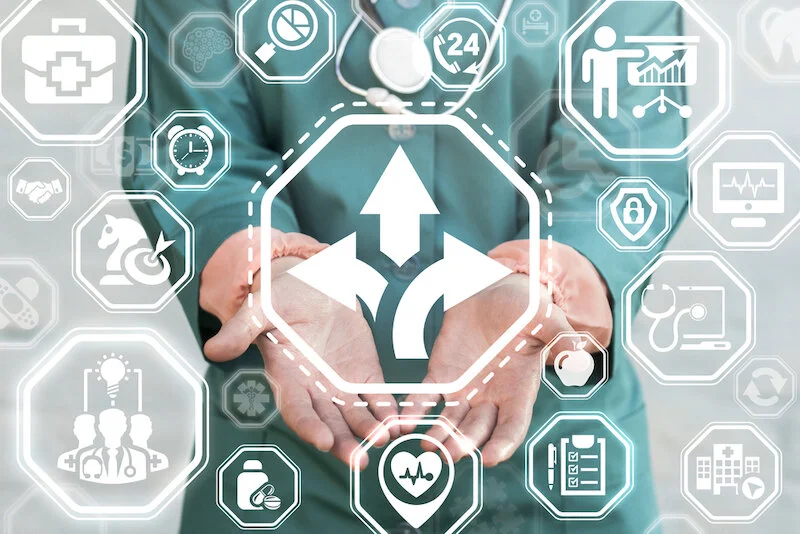Will ‘unprecedented’ times lead to unprecedented change?
By Pamela J. Gallagher
Whether in reports from journalists, briefings from government officials, or socially-distanced conversations with next-door neighbors, “unprecedented” seems to be the word on everyone’s lips these days.
It is certainly true that in the United States, we have not experienced anything quite like the societal, economical, and public health impacts of COVID-19 in our lifetime. However, if we look into the not-too-distant past, we see that today’s events are not entirely unprecedented, and that the past may offer perspective to the healthcare industry as we find a way forward.
1918 flu pandemic as a catalyst for change.
In the flu pandemic of 1918, also called the Spanish flu, between 50 and 100 million people died from the virus worldwide, or up to five percent of the global population, according to a Smithsonian Magazine article.
The healthcare industry and pandemic response looked very different at that time in history. Healthcare was largely decentralized. Doctors operated independently or were funded by charities and religious institutions. Many people did not have access to basic care. As an American Journal of Public Health article explains, the countermeasures available to mitigate the pandemic were limited and relied on nonpharmaceutical interventions. The role of public health officials was minimal in the pandemic response.
The devastating loss of life in the 1918 flu pandemic acted as a catalyst, bringing swift and innovative changes to healthcare. The field of epidemiology emerged as data was collected more systematically. Only six years after the Spanish flu subsided, all states were participating in a national disease reporting system. The public health field began to look more like it does today, as countries restructured their health ministries and departments in the following decade.
Medicine moved beyond a solely biological and experimental focus to elevate sociological considerations as well. Prior to the 1918 flu pandemic, the medical community believed that individuals were to blame to succumbing to infectious diseases. The experiences of the Spanish flu demonstrated that pandemics are a fundamentally social problem. World leaders recognized a need for a mechanism for an international response to public health threats. In 1919, the forerunner of the World Health Organization (WHO) was formed.
What is next for healthcare?
The past century has seen improvements in medical care, vaccinations, antiviral medications, community mitigation efforts, diagnosis, communications, and pandemic response. This leads me to wonder: What’s next in healthcare? What will the new normal look like? How might things change for the better?
I find the possibilities fascinating. I will explore the following questions in my next several articles:
Telemedicine. Virtual appointments have found their footing in the past several weeks. How will it impact patient-physician relationships?
Hospital volumes and operations. Will inpatient care become more acute due to delays in seeking care, or changes in the volume of elective procedures? Will the current decline in Emergency Department visits change the way patients use emergency care? Will the decline in hospital volume put hospitals in financial jeopardy, or drive up the cost of healthcare? What opportunities might a change in hospital volume create?
Payors. Will premiums decrease due to changes in use? Will we see a rise in high deductible plans?
Technology. With the increase of sharing information across many different methods, how will the value of EMR be impacted? How might coding be simplified? Will the predictions generated by artificial intelligence be worth the cost?
Healthcare real estate. How might extended social distancing measures impact the space required to care for patients? Will patients’ vehicles become the new waiting room? Could treatment areas expand while lobbies and waiting rooms get smaller? Will drive through-testing become the norm?
The healthcare industry is slow to change, but I am hopeful that just as healthcare and the public health field made rapid, necessary changes 100 years ago, we will see a similar pattern of response in the years after COVID-19.
Resources:
How the 1918 Flu Pandemic Revolutionized Public Health, Smithsonian Magazine
100 Years of Medical Countermeasures and Pandemic Influenza Preparedness, American Journal of Public Health
What Will U.S. Health Care Look Like After the Pandemic?, Harvard Business Review
The World Changed Its Approach to Health After the 1918 Flu. Will It After The COVID-19 Outbreak?, Time Magazine
How We Can Expect the Healthcare Industry to Change in the Future, George Washington University School of Business


